![philippine property outlook 2013]() Based on what I have gathered from news and analyses over the internet as of this writing, the outlook for Philippine real estate this 2013 is very positive. I have gathered the important news regarding the Philippines and real estate in one piece so there’s no need to go through the internet clutter – just follow the links to read the sources. No one has a crystal ball, and there will always be naysayers, but we can base our outlook on facts as will be discussed below.
Based on what I have gathered from news and analyses over the internet as of this writing, the outlook for Philippine real estate this 2013 is very positive. I have gathered the important news regarding the Philippines and real estate in one piece so there’s no need to go through the internet clutter – just follow the links to read the sources. No one has a crystal ball, and there will always be naysayers, but we can base our outlook on facts as will be discussed below.
Philippine performance in general
We are fortunate that the country’s leaders today are very capable and competent in steering the Philippines to its current status as an international rising star. The world has recognized the able leadership of our Secretary of Finance Mr. Cesar V. Purisima, who was given the honor of being Finance Minister of the Year by Euromoney. Likewise, Bangko Sentral ng Pilipinas (BSP) Governor Mr. Amando Tetangco was named as one of the world’s best central bankers in 2012 by Global Finance Magazine.
To date, the Philippines is just a half-step below investment grade. An article in Bloomberg.com dated Dec. 20, 2012 cited that Standard & Poor’s, an international credit rating agency, raised the outlook on the nation’s debt to positive, on the back of improved governance and public finances. S&P may even grant the Philippines’ first investment grade rating in 2013. Note that Moody’s, another international credit rating agency, just raised its rating for the Philippines at the end of October 2012.
What does it mean to be investment grade exactly, and why does the Philippines aspire to get it? Investment grade basically refers to the likelihood that a country will default on its debts. The higher the investment grade, the higher the level of investor confidence (whether local or foreign) in the Philippines. Furthermore, interest rates on the country’s outstanding debts may be lower due to an investment grade rating, and the corresponding decrease in interest would translate to significant savings which may be used for various projects.
On another note, according to an inquirer.net article, International Monetary Fund (IMF) managing director Christine Lagarde, who visited the Philippines just this November 2012, stated that the Philippines is the only country in the world for which the IMF has upgraded its economic growth forecast for 2012. Isn’t that amazing?
Recently, too, the government cut its outstanding foreign debt by $1.5B. Last June 2012, the Philippines lent $1B to the IMF. In December 2006, the Philippines has already fully paid its debt to the IMF. Remittances remain strong and seen to hit $24B by year-end 2012 according to another inquirer.net article.
In an article in foreignpolicy.com, dated December 2012, Ruchir Sharma, the head of emerging-market equities and global macro at Morgan Stanley Investment Management, said that the Philippines is one of the breakout nations to watch. The Philippines was also tagged as Asia’s Greatest Hope in an article by Ila Halai of Inspiratia – this article enumerated the Public-Private Partnership (PPP) projects in the pipeline, as well as the local and foreign investors and transaction advisors interested in them. Global giant HSBC already forecasted as early as January 2012 that by 2050, the Philippines will leapfrog to be the 16th largest economy by 2050. Third quarter 2012 Gross Domestic Product (GDP) growth reached a record 7.1%, as discussed in a Financial Times blog dated November 28, 2012.
Improvements in different areas are too many to mention one by one. And they’re all happening in hyper speed – just this December 2012, the Reproductive Health (RH) Bill was passed, as well as the Sin Tax Bill, to name two. Eight PPP projects, mostly on infrastructure, have been rolled out. And so on. The BIR even posted the implementing rules and regulations for the Sin Tax law, Revenue Regulations (RR) No. 17-2012 today, Dec. 28, 2012. A copy of the Sin Tax Law, Republic Act (R.A.) No. 10353, can be accessed here.
I can feel that people in government now are really working hard and the positive effects are now starting to be felt. Some may argue, though, that the Philippines’ growth does not include the ordinary Filipino. You know what, the National Economic Development Authority has been studying this and efforts are being done to make the growth “inclusive,” ensuring that the ordinary Filipino will feel the benefits.
What are the real estate trends? Is there a real estate bubble forming?
Rappler.com wrote about the sunrise sectors of 2013, and as expected, one of them is the real estate and construction sectors.
But what about the dreaded real estate bubble? Mr. Ramon C.F. Cuervo III, a respected real estate consultant, discussed it excellently in his post at cuervopropertyadvisory.wordpress.com, with insights culled from the talks at the University of Asia and the Pacific last October 23, 2012 entitled “Is a bubble in the Philippine Real Estate Sector Developing?”. Mr. Cuervo is my idol in real estate – I really learn a lot from his posts so I strongly urge everyone to read his blog from the latest post moving backwards (I am serious).
As discussed by Mr. Cuervo in his post, the discussion of Dr. Winston Padojinog, an economist from the University of Asia & the Pacific (UA&P), suggested that a bubble is indeed forming in the higher-end residential market segment. The basis was his research team’s study on housing supply and demand as discussed in an article in the website of renowned economist Dr. Bernardo Villegas. According to the statistics cited in the said article, the low-cost, economic and socialized housing segments experience shortages in most years from 2001 to 2011, while the high-end and mid-income market have some surplus units. It is good to be aware of these statistics when making your investments.
Mr. Cuervo also discussed in his blog the talk of Mr. David Leechiu, Regional Director and Country Manager of Jones Lang LaSalle. It is projected that the Business Process Outsourcing (BPO) industry will continue to grow until 2015 and this will support office space demand averaging about 400,000 square meters per year, and this demand will be met by the current and pipeline supply. CB Richard Ellis also has its own forecast. Definitely, one of the drivers of Philippine growth is the BPO industry so these figures are well-supported.
Renowned economist Dr. Bernardo Villegas also wrote about the perceived real estate bubble in his website. Here is a portion of his article which I feel is very important:
“…let me just summarize my current views about residential housing in the National Capital region, especially in Makati, Mandaluyong, Ortigas, Quezon City and other suburbs of Metro Manila. After studying the findings of some of my colleagues at the University of Asia and the Pacific concerning the five segments of residential housing, i.e. socialized housing, economic housing, low-cost housing, mid-level housing and high-end housing, the probability of an oversupply three or five years down the road is high only in the last segment, high-end housing in which the majority of the buyers are purchasing units for investments or speculation and are not the ones occupying the units when they are built. This is not the case with the other segments, especially the units selling from one to five million pesos. The ones buying are those actually occupying the units once built, especially among the families of OFWs, the BPO workers or middle-income families with children studying in the universities in the urban centers of Metro Manila. In contrast, the units that cost P15 million or above are usually for rent. But there are just not enough rich Filipinos or expats who can afford to rent these units in the next three to five years.” (emphasis mine)
It is worth noting that property giant Ayala Land has set up subsidiaries to serve the low-end real estate market, namely Amaia and Bella Vita. Low-cost and socialized housing have tax incentives and are included in the Philippines’ 2012 Investment Priorities Plan. Both the government and the private sector are continuously improving and using as bases the findings culled from different studies.
Of interest to me too in particular are the projections of Mr. J. J. Reyes of American Institutes in Hawaii that a growth area in real estate is that catering to Continuing Care Retirement Communities (CCRCs) (also known as retirement villages). Mr. Cuervo and Mr. Raphael Torralba also have an insightful article on the retirement real estate sector, culled from talks at the Retirement and Healthcare Summit held last June 26, 2012. You can actually download the pdf copies of the talks here, just follow the tabs (Pre-Event and Sessions 1 to 4). With the Philippines’ excellent medical professionals, medical tourism and retirement villages are indeed bright prospects. I like the suggestion of having long-term leases instead of selling the properties outright to the retirees – I think this is a win-win situation for both the investor and the retiree. If a developer would be developing a retirement village near a good medical facility and offer it to investors condotel-style, I think it would be a very good investment.
Real estate bubble from the point of view of Fil-Americans
Joe Salcedo, a Fil-American, has written about a looming crisis in Philippine real estate in biggerpockets.com and also co-wrote, with Ian Mariano, another Fil-American, an Open Letter to the Philippine President on this matter. I emailed Ian personally and ascertained that their intentions in publishing these articles are sincere, and that the issues they raised are legitimate concerns – probably at the back of the minds of Filipinos both here and abroad. You may want to follow the links, read their position, and leave your comments below. Let’s have a healthy discussion. I know we have a lot of readers who can give their inputs on this very hot topic which is the real estate bubble.
Personally, I feel that there is no need to “sound an alarm” and sow fear and anxiety. I am not a government official but I actually felt insulted that they implied that government officials are not aware of what happened in the past and in other countries, and that the Philippines is not prepared or preparing for a downturn. We have highly intelligent and competent people in government and I have full faith that they are doing their job and have the Philippines’ best interests at heart. I am very happy with the performance of our leaders and of our country – they deserve appreciation and more encouragement to keep up their good work.
That said, I have to emphasize – yes, real estate is cyclical. There will be ups and downs – this is a given. Is there anybody here who doesn’t believe this is so?
Yes, there are issues that may lead to the popping of an asset bubble – and without anybody telling them, government officials have addressed and are continually addressing them.
Let’s discuss the issues that could cause a real estate bubble as raised in the Open Letter one by one and my position on each issue, so we would have a balanced view:
Possible causes of a real estate bubble in the Philippines based on the Open Letter
|
What the Philippines is doing(based on my research)
|
| The government cannot save the banks like how the U.S. managed to do so, pouring hundreds of billions of dollars in bail outs. |
The Philippines is not like the US. As early as 2008, the BSP released Circular No. 600 Series of 2008 which states that real estate-related loans should not exceed 20% of banks’ loan portfolio.
The BSP issued Memorandum No. M-2012-046 dated Sept. 21, 2012 requiring banks to submit an Expanded Report on Real Estate Exposures to monitor banks’ compliance with BSP regulations. The BSP later issued Memorandum No. M-2012-046 dated December 18, 2012 providing for Guidelines on the Electronic Submission of the Expanded Report on Real Estate Exposures for easier compliance and monitoring. |
| “Lending is loose ”American banks stopped doing their due diligence and just lent money to almost everyone who was willing to lie on their income. |
Philippine banks have credit checking and other mechanisms in place before lending. Perhaps Joe and Ian have not yet obtained a loan from Philippine banks. I actually don’t get the reference link they provided as this does not support their argument at all. Philippine banks generally don’t give NINJA loans (No income, no job, no assets) like what happened in the US.
As a guide to those using contract to sell financing, the BSP issued on November 27, 2012, Industry Reference Practices on Sound Contract to Sell Financing Circular Letter No. CL-2012-084. |
| People earned higher incomes but they are also saving less for the rainy days. |
This is not true. In a rappler.com articledated Dec. 27, 2012, it was said that
“Data from the BSP showed that Filipino household’s savings increased by 6.3% to P909.8 billion, making it the prime savings driver in the economy.
Overall domestic savings increased by 6.8% to P1.85 trillion this year. This includes savings made by households, government, non-financial corporations, and financial corporations.”
|
| The Philippines’ growth is not sustainable, as there is no “total factor productivity” |
First of all, the article they are citing is dated April 2012, not November 2012. The said study was probably used as basis to convene concerned sectors in the Inception Workshop on the Formulation of the Manufacturing Industry Roadmap on October 19, 2012, convened by The Philippine Institute for Development Studies (PIDS) and the Department of Trade Industry Board of Investments (DTI-BOI). Thus, measures are being done to address this issue.
The National Economic and Development Authority has prepared the Philippine Development Plan 2011-2016 outlining what need to be done for sustained growth. A short video can be found below: |
| “Hot money” is flowing now into developing Asian countries like the Philippines, a bulk of which is invested on real estate. |
First of all, I do not know the basis for their assertion that a bulk of the “hot money” is invested in real estate. By the nature of “hot money”, it may be pulled out easily, so I cannot see how this may be true in the case of real estate unless they are invested in listed property firms. Even then, the property firm should be aware that such hot money may be pulled out anytime.
Just today, Dec. 28, 2012, a philstar.com article stated that the BSP has released a cap on capital inflows that would minimize speculative flow but not curtail real investments. I am not competent, though to discuss this at length as I am not an economist. These only show that the BSP is very much aware of this issue and, after studying the different options available to manage it, has acted swiftly. |
| Donald Trump has put his name on Trump Tower, with units worth up to $1.86 million each(implying that condos are overpriced) |
Only someone who is not from the Philippines would treat the Trump Tower as representative of Philippine condominium sales. This is very misleading. |
| The Philippines might suffer the same fate as Spain |
I will quote again from the article of renowned economist Dr. Bernardo Villegas dated November 15, 2012:
“Having said that, I do not expect a bubble as Japan witnessed in the 1990s, Thailand in the financial crisis of 1997, and the U.S. and Spain during the Great Recession. The buyers of the expensive units are not highly leveraged. In fact, there was a recent report that bank lending to real estate is still below the maximum limit. What we will see is a slow down three years from now (call it a bust) as developers realize that they have overbuilt and postpone further expansion projects, especially in the Metro Manila area. I don’t see a similar bust in such urban areas as Cebu and Davao. Developers are just beginning their feverish construction activities in these secondary cities.” (emphasis mine)
I also read the article they quoted which discusses the case of Spain and I cannot see how it the same as the case of the Philippines. |
The underlying reasons for the collapse of other countries’ markets are not on all fours with what’s happening in the Philippines. In my opinion, it’s like comparing apples and oranges – they are simply not the same. Just because another country’s real estate market collapsed, or just because the same country’s real estate market collapsed in the past, doesn’t mean that it will happen again, specially if the reasons for the previous collapse are not present anymore.
On another note, in the future, when the normal downturn comes around (and probably for reasons other than what the naysayers have trumpeted), I don’t ever want to hear people proudly say: “I predicted that X years ago! See, I was right!”. Yes, let’s be prudent and cautious, but let’s not stop ourselves from being happy about what is really happening and is good for the country.
At the end of the day, we should all be aware of the risks in real estate investing. Like the stock market, real estate has cycles too. All types of investing are subject to risk – the only answer to this is risk management. I am confident that government officials are doing their best to push this country forward and minimize and manage the concomitant risks to real estate investing.
Whatever happened to Philippine REIT?
Republic Act (R.A.) No. 9856 or the Real Estate Investment Trust (REIT) was made into law in 2010 but it was only in 2011 when the Bureau of Internal Revenue (BIR) released its implementing rules and regulations – Revenue Regulations (RR) No. 13-2011 dated July 25, 2011. Nothing has happened since then. The deadlock is mainly due to the percentage made available to the public – the private sector wants to make it lower so they can have control over the company, while the BIR wants its higher so that there will be more public participation. The BIR also forecasts lower tax collection and this is not something they are willing to approve. Many are pushing for REITs as they say they are very much alive in other countries. I don’t think that the BIR or the private sector would budge, though, so I believe that this deadlock will remain indefinitely.
Infrastructure development
The Public-Private Partnership Center’s website and facebook page (which is more updated) are excellent sources of up-to-date information on PPP projects. The following are the PPP projects to date:
- $46.6 million Daang Hari-SLEX Link Road project was awarded to Ayala Corp. last year.
- $389 million School Infrastructure Project Phase I, which was awarded to the consortiums of Citicore Holdings Investment Inc.-Megawide Construction Corp. Inc. and BF Corp.-Riverbanks Development Corporation.
- $377.6 million NAIA Expressway Phase II Project,
- $1.25 billion LRT Line 1 Cavite Extension and Operations and Maintenance Project
- $135.5 million Modernization of the Philippine Orthopedic Center
- PhP 1.72 billion Single Ticketing System for LRT-1, LRT-2, MRT-3
- PhP 1.155 billion Hydro-electric power project involving the rehabilitation, operation and maintenance (ROM) of the MWSS-owned auxiliary turbines 4 and 5 installed in the Angat Hydro-electric Power Plant (AHEPP) Complex in San Lorenzo, Norzagaray, Bulacan.
- $504.8 million Mactan-Cebu International Airport
Infrastructure development has far-reaching positive consequences on Philippine development.
Construction
Construction projects in the country are seen to rise more than three times next year from this year amid improving investment and economic climate, consultancy firm BCI Asia said in an article in philstar.com.
Tourism
Tourism is on the upswing and hotels will be benefiting from this. Flights to Palawan are more than 20 per day since the Underground River was held as one of the natural wonders of the word. Cebu, Boracay, Bohol, Camarines Sur, and others are also improving – hotel and resort occupancy rates are rising. Just today, Dec. 28, 2012, a philstar.com article said that the tourism sector should prepare for a boom in tourist arrivals since Senate Bill 3343, which seeks to scrap the 2.5 percent Gross Philippine Billings Tax (GPBT), and the three percent common carriers’ tax (CCT) for airlines with countries of origin that will agree to give a similar tax exemption to Philippine carriers, has been passed already on third and final reading. Add to this the fact that Philippine Airlines will be building a new international airport, and several airports are being renovated or improved, then we can really foresee a reasonable boost in tourism.
Casinos
Real estate services related to gaming are likewise improving with the establishment of Resorts World Manila and Aseana City at Macapagal Ave. There is a Comprehensive Land Use Plan (CLUP) specifically for Aseana City and it’s true that there are big plans to develop that area as a major gaming center. Just today, Dec. 28, 2012, the headline in the print edition of the Philippine Star screams “Casino Boom in Manila”. You can access the digital edition at http://thephilippinestar.ph/. They are set to grow the casino business a la Macau.
Agriculture
Here is a great report by Asst. Secretary Edilberto M. de Luna of the Department of Agriculture (DA) on The Role of Agriculture in Sustainable Development, presented last July 5, 2012. It outlines the problems, proposed solutions, and results as monitored by the DA.
Areas under development
I have previously written about developments in Mindanao, Cavite, Taguig, and Quezon City. Several parts of the country are undergoing development as well.
Conclusion
Based on the foregoing, for 2013, all signs point to real estate continuing to be on the rise. With good economic fundamentals and controls from the BSP, the outlook is indeed rosy. Thank you to all our hardworking government officials who serve our country with all their hearts.
Please note too that notwithstanding the forecasts, it is always prudent to invest wisely based on current market values and what you can afford, as opposed to investing based on speculation and hoped-for future appreciation. Real estate, like the stock market, is subject to cycles, so be sure to be ready to ride out any possible downturn. So for 2013, we remain optimistic and pray continually for more blessings for the Philippines.
~~~
Cherry Vi M. Saldua-Castillo
Real Estate Broker, Lawyer, and CPA
PRC Real Estate Broker License No. 3187
PRC CPA License No. 0102054
Roll of Attorneys No. 55239
Text by Jay Castillo and Cherry Castillo. Copyright © 2008 – 2012 All rights reserved.
Full disclosure: Nothing to disclose.
Image courtesy: of FrameAngel / FreeDigitalPhotos.net
Philippine Property Outlook for 2013 is an original post from ForeclosurePhilippines







 Based on what I have gathered from news and analyses over the internet as of this writing, the outlook for Philippine real estate this 2013 is very positive. I have gathered the important news regarding the Philippines and real estate in one piece so there’s no need to go through the internet clutter – just follow the links to read the sources. No one has a crystal ball, and there will always be naysayers, but we can base our outlook on facts as will be discussed below.
Based on what I have gathered from news and analyses over the internet as of this writing, the outlook for Philippine real estate this 2013 is very positive. I have gathered the important news regarding the Philippines and real estate in one piece so there’s no need to go through the internet clutter – just follow the links to read the sources. No one has a crystal ball, and there will always be naysayers, but we can base our outlook on facts as will be discussed below.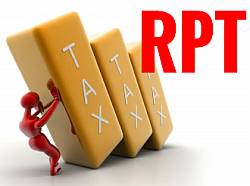 Real Property Tax (RPT) is a tax that owners of real property need to pay every year so that the local government unit (LGU) will not auction off their property.
Real Property Tax (RPT) is a tax that owners of real property need to pay every year so that the local government unit (LGU) will not auction off their property. Many people want to invest in real estate, and some even already know what they want to buy, but the real problem is – how can they get financing for the purchase? Majority of the population do not have enough savings to purchase a property in cash.
Many people want to invest in real estate, and some even already know what they want to buy, but the real problem is – how can they get financing for the purchase? Majority of the population do not have enough savings to purchase a property in cash.
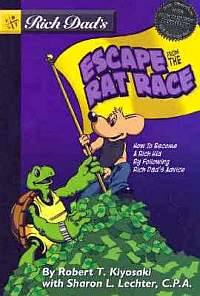
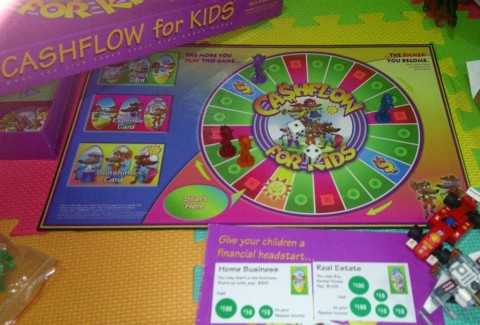


































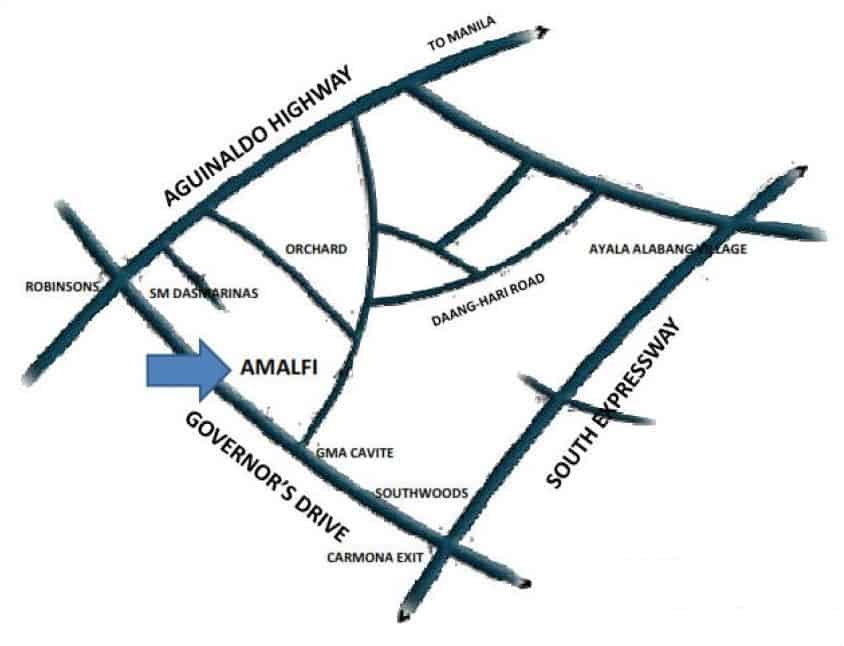
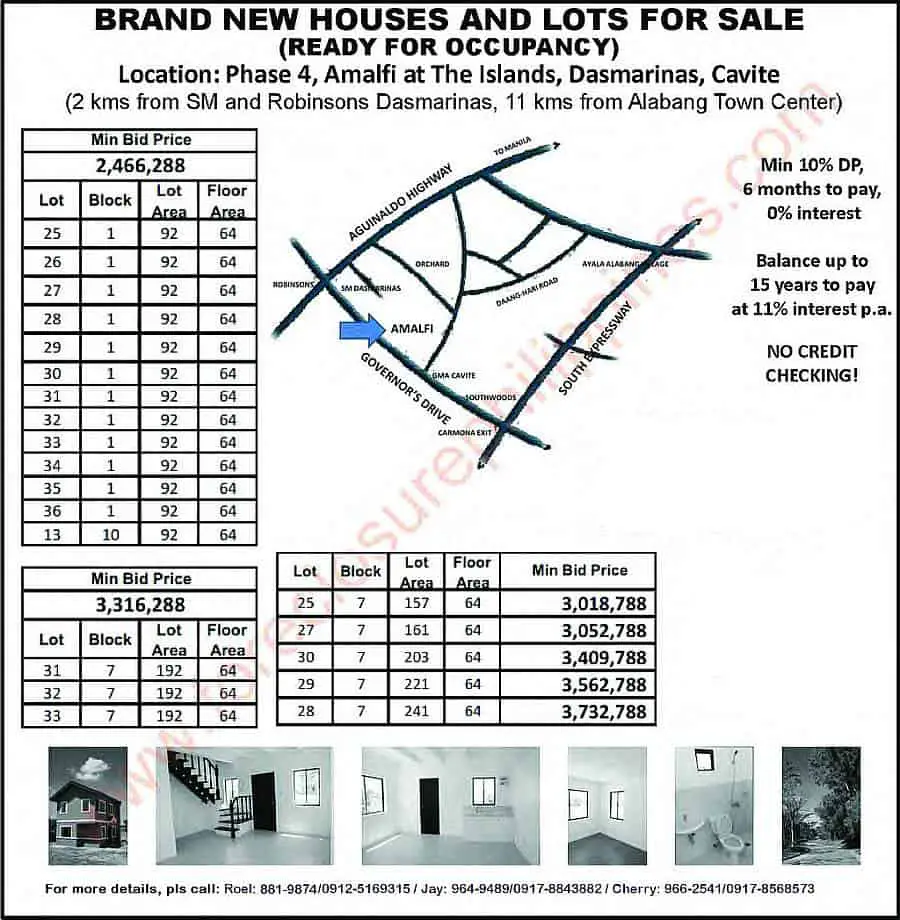








 However, I believe that being a topnotcher helps boost your confidence, as it is a sign that you know the technical aspects of your profession. If you continue your diligence in studying, not only from books but also from mentors, it is very likely that you will be able to achieve success at a faster rate.
However, I believe that being a topnotcher helps boost your confidence, as it is a sign that you know the technical aspects of your profession. If you continue your diligence in studying, not only from books but also from mentors, it is very likely that you will be able to achieve success at a faster rate.





